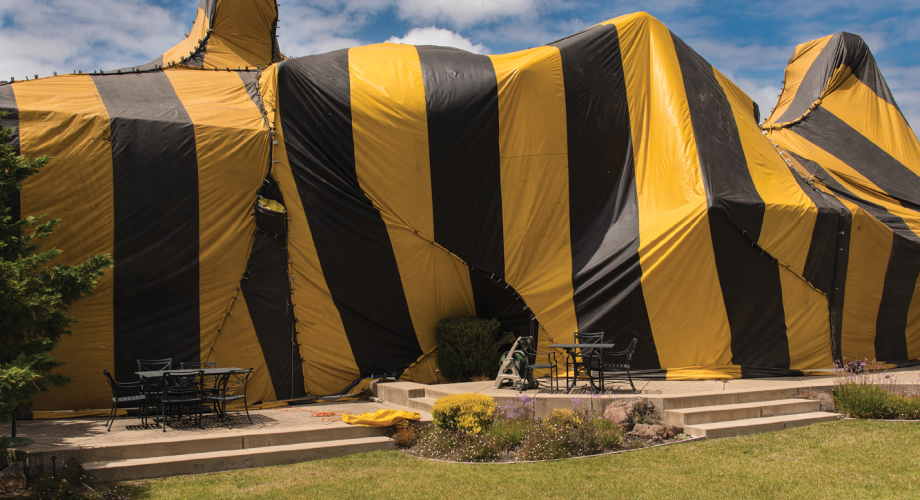Q: I am having a termite issue at my apartment building, and I know I will need the services of a pest eradication company. I have been hearing a lot about “orange oil” or spot treatments as a treatment for termites. Is the spot treatment advertising hype or the real thing?
A: We have been doing a little bit of research on orange oil. From the information we have gathered, it does kill termites and does it very well. However, it is a localized treatment and that may be its only drawback. With any localized treatment, the kill zone is limited to the area treated. Orange oil does work and spreads through the wood fibers in the localized area of treatment, but it will not spread throughout the structure. The primary method to ensure total eradication is to cover the building with a tent and pump in the treatment. The tenting procedure has some negative aspects: The service is expensive compared to localized treatments and the secondary issue of relocating your residents for up to three nights can be extremely expensive and disruptive. If you have a major problem with termites, tenting may be your best method, but for most termite issues, a localized treatment is adequate.
Q: Can you tell me what would cause rust-colored stains on the inside of a toilet bowl? The stains are in all the places where the water rinses down. This toilet is over 20 years old but is otherwise in excellent working condition. The water in the tank and in the bowl are clear, and the toilet in the second bathroom does not have this problem.
A: Twenty-plus years! This toilet is crying to be replaced! Chances are that a new toilet will also save you money with less wasted water. Because this problem isn’t occurring in the other toilet, it rules out a high iron content in the water supply. The most likely culprit is bits of old chain at the bottom of the tank leaching rust into the tank water. Because this is an old toilet, the flush valve assembly may leak into the bowl. Combined with bits of rusty metal in the tank, the water will leave a residue of rust on the porcelain. This would be a good time to remove the toilet tank and replace the flush valve at the bottom of the tank. While the tank is off, look for anything that would cause rust such as metal bits, old chains, etc., and thoroughly clean the tank. Reassemble the tank to the toilet using new bolts and rubber washers and a new spud gasket between the tank and bowl. To clean the rust stains from the bowl, you can use a pumice stone and bowl cleaner. If that does not work, soak the deposits with some clear vinegar and then use the pumice stone or green scrub pad.
Q: After doing work on my apartment units, I am always left with extra, unused parts. What do I do with all the extra parts collected over the years? I know the standard answer is to use the parts or take them back to the hardware store; it seems like a simple solution, but it has gotten out of control. I need help!
A: It is easy to start a personal hardware store in your garage—we are sure you are not the only one with this problem. It starts small, with just a few light switch plates and a bag of wire nuts. If only you could find that receipt, you would take them back to the store right away… well, maybe tomorrow after the job is finished… or the next job…
Admitting you have a problem is the first step in solving it. The next steps, in order:
- The first thing to do is actively inventory the parts, separating them into trade groups such as electrical, plumbing, carpentry, etc.
- Now, separate the returnable parts from the non-returnable parts. Typically, the returnable parts are still in their packaging with the bar code visible. Many home centers will accept back their parts without a receipt if they are in good condition, likely giving store credit for the transaction.
- With the credit, buy some clear, see-through plastic bins or containers. Clearly mark the containers by trade such as electrical, plumbing etc. The see-though bins will help eliminate the problem of, “If I can’t see them, I need to buy more” syndrome.
- Keep the containers readily available: This is the key to success! If you are obsessive at all, you can subdivide the categories even further, such as a bin for switch plates and receptacles, or plumbing parts by copper or PVC, etc.
- Before your next job, review your purchase list against the parts in each bin. Because you most likely purchase similar items for most apartment maintenance jobs, you can start to deplete your in-house stock by using parts in your current inventory.
- Make it a rule that the current job is not complete until you make your returns. That is a lot more fun than searching your garage for parts.
